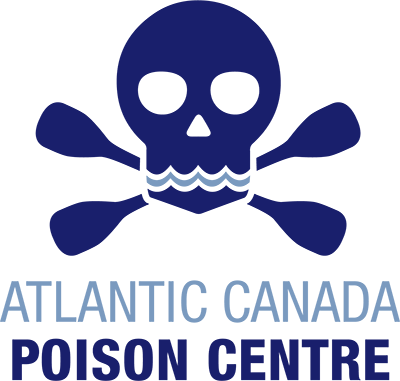
Atlantic Canada Poison Centre
Antidote Kit Manual
Sodium Bicarbonate
NaHCO3
Indications
- Drug or toxin-induced wide complex dysrhythmia (e.g; tricyclic antidepressants).
- Toxin-induced metabolic acidosis (e.g; methanol, ethylene glycol, salicylate, metformin).
- Alkalinization of the urine to enhance drug elimination (e.g; salicylate, chlorphenoxy herbicides, phenobarbital, methotrexate) or to prevent nephrotoxicity from rhabdomyolysis.
- Adjunctive therapy for chlorine gas inhalation with respiratory symptoms
Dosage
Note: 8.4 % Sodium Bicarbonate = 1 mmol/mL or 1 mEq/mL
- Drug or toxin-induced wide complex dysrhythmia: 1 - 2 mmol/kg (50 - 100 mL of sodium bicarbonate 8.4%) IV direct over 1 - 2 minutes. Repeat as required to improve signs of cardiac toxicity (e.g; QRS greater than 100 ms, hypotension, wide complex dysrhythmia). Do not exceed a serum pH of 7.55.
- Toxin-induced metabolic acidosis: 0.5 - 1 mmol/kg IV direct. Repeat as required to maintain serum pH greater than 7.20.
- Urine alkalinization: Administer a solution of 0.15 mmol/mL at 150 - 200 mL/hour (see Administration section).
-Goal is a urine pH of greater than 7.5.
-Correction of hypokalemia is required to achieve alkaline diuresis. - Chlorine gas-induced inhalational injury: 4 mL of a 4.2% sodium bicarbonate solution by nebulizer. One dose is often adequate; repeat doses may be necessary in more severe cases. Contact the poison centre for guidance.
Administration
- IV Direct: May be administered undiluted (8.4% solution) in emergency situations at a rate not exceeding 1 mmol/kg/minute. Blood pressure monitoring, blood gas (acid-base) monitoring, serum electrolyte monitoring and respiratory support are required.
- Infusion: Add 150 mL sodium bicarbonate 8.4% injection to 850 mL dextrose 5% in water for a final concentration of 0.15 mmol/mL. Blood gases (acid-base balance) and serum electrolytes must be monitored.
- Nebulization: For a final concentration of 4.2%: add 2 mL of 8.4% sodium bicarbonate solution to 2 mL of sterile water.
Compatibility, Stability
- Compatible with sodium chloride 0.9% and dextrose 5% in water.
Potential Hazards of Administration
- Phlebitis (especially with direct administration).
- Alkalosis, hypernatremia, edema (especially patients with cardiac, renal, and hepatic insufficiency), hypokalemia, hyperosmolality.
- Hypocalcemia, tetany, neuromuscular hyperactivity.
Miscellaneous
- 8.4% solution contains 1 mmol/mL of sodium bicarbonate. Each 84 mg of sodium bicarbonate provides 1 mmol (1 mEq) of sodium and bicarbonate ions.
- 4.2% sodium bicarbnonate provides 0.5 mmol/mL.
References…
Bailey, B., Blais, R., Gaudreault, P., Gosselin, S., & Laliberte, M. (2009). Antidotes en toxicologie d'urgence (3rd ed.). Quebec, Canada: Centre antipoison du Quebec.
D'Alessandro, L. C., Rieder, M. J., Gloor, J., Freeman, D., & Buffo-Sequiera, I. (2009). Life-threatening flecainide intoxication in a young child secondary to medication error. The Annals of Pharmacotherapy, 43, 1522-1527.
Goldfrank, L. R., Nelson, L. S., Lewin, N. A., Howland, M. A., Hoffman, R. S., (2015). Goldfrank's toxicologic emergencies(Tenth ed.). New York: McGraw Hill.
IWK Regional Poison Centre. (2013). Sodium channel blockers (wide QRS): A brief overview for emergency departments. Unpublished manuscript.
IWK Regional Poison Centre. (2013). Salicylate (ASA) toxicity: A brief overview for emergency departments. Unpublished manuscript.
Micromedex, T. H. A. (2014). Micromedex health care systems. Retrieved from http://www.micromedexsolutions.com
Neavyn, M. J., Boyer, E. W., Bird, S. B., & Babu, K. M. (2013). Sodium acetate as a replacement for sodium bicarbonate in medical toxicolgy: A review. Journal of Medical Toxicology, 9, 250-254.
Olson, K. R. (2007). Poisoning & drug overdose (Sixth ed.). New York: McGraw Hill.
Phelps SJ, C. C. (2013). Teddy bear, pediatric injectable drugs. Retrieved from http://www.pharmpress.com/product/MC_PED/pediatric-injectable-drugs
Shannon, M. W., Borron, S. W., & Burns, M. J. (2007). Haddad and Winchester's clinical management of poisoning and drug overdose (Fourth ed.). Philadelphia: Saunders Elsevier.
Trissel, Lawrence, A,. (2013). Handbook on injectable drugs (17th ed.). Bethesda, Maryland: American Society of Health-System Pharmacists
Vajner 111, J. E., & Lung, D. (2013). Case files of the university of California San Francisco medical toxicology fellowship: Acute chlorine gas inhalation and the utility of nebulized sodium bicarbonate. Journal of Medical Toxicology, 9, 259-265.


